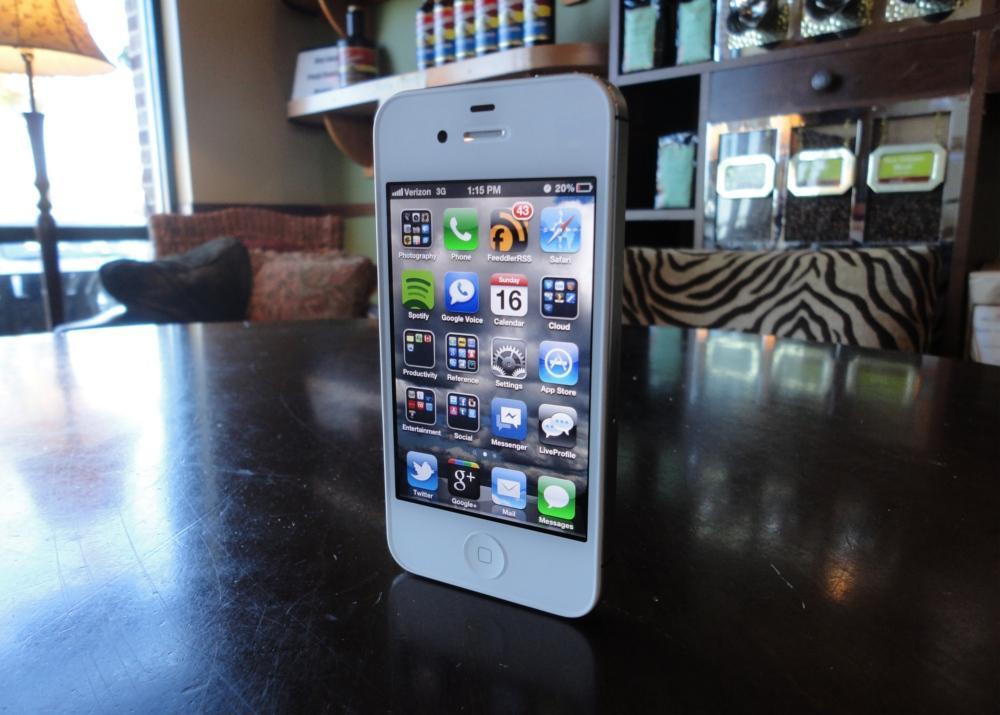
The next iPhone, although we really know nothing about it, is already one of the most highly anticipated devices of 2012. Every iPhone model to date, regardless of specs and new features (or a lack thereof) has been the most popular – or a close second – handset of its time. Surely, the next iPhone will be no different.
Despite everything we've heard essentially being an insubstantial rumor, they keep rolling in at a rate that will only increase between now and fall (possibly summer), when the next iPhone is expected to launch. And, as we have witnessed many times before, expectations are beginning to surge.
Among the rumored specifications for the next iPhone are a larger display, 4G LTE compatibility and a redesigned chassis. Individually, none of these are outside the realm of possibility. And even considered together, they don't at first appear to introduce very many problems – a handful of Android counterparts already tout large, high-res displays, 4G connectivity and much more. In terms of the iPhone and Apple, however, these features could call for a massive redesign. And the more you piece the puzzle together, the less likely all of these features together, in a single iteration, seem.
First, the display; I've touched on this a few times now. If they decide to bump the size of the display to 4-inches like some rumors suggest, in order for Apple to keep their beloved Retina Display marketing title for the iPhone's crystal clear display, they would also have to increase the display resolution. (After thousands of developers having to update their apps to support the Retina Display on the iPad, I'm sure that would go over well.)
Currently, the iPhone's display resolution is 960 by 640 pixels. If Apple quadruples the resolution (double the vertical and horizontal pixels) like they did with the new iPad, the iPhone's display would be over 1080p (1920 by 1280 pixels), which could pose several problems of its own. Even at double the resolution (1440 by 960), the pixels per inch would be over 432, far more than what is necessary. A more recent and less likely rumor that started circling the Web yesterday, which points to a 4.6-inch display on the next iPhone, could make such a large jump in resolution much more justifiable. At 1,440 by 960 pixels, a 4.6-inch display would tout roughly 376ppi. Still, the high resolution and larger display doesn't come without a few sacrifices and plethora of changes, like a radically different design.
As we've all probably heard by now, the other rumor is that the next iPhone will feature 4G LTE connectivity. We had a pretty solid notion that there would be no LTE iDevices last year. But this is 2012 and the new iPad has already arrived, bearing LTE connectivity. So we know that LTE is a high possibility in any iDevices moving forward.
The common problems that both a higher-resolution display and LTE connectivity propose, however, are power consumption and space. As the new iPad has already shown us, the Retina Display (with a resolution of 2,048 by 1,536) has caused some heat issues. More importantly, though, Apple had to nearly double the capacity and wattage of the battery to match battery life of previous models. The iPad 2 featured a 6,944mAh (25W) battery, which was bumped up to a 11,666mAh (42W) battery in the new iPad.
It's likely that these very changes would be mirrored in an iPhone with both LTE and a larger (still Retina) display. The problem is that unlike the iPad, which is roughly 10-inches diagonally, there is far less space to work with inside the iPhone. Apple managed to keep the same design in the new iPad as the iPad 2. However, the new iPad is both heavier (1.44 to 1.46 pounds vs 1.33 pounds) and thicker (8.6mm vs 9.4mm) than the second-generation iPad. Such changes might seem subtle between iPad generations, but could definitely be more substantial in a device with anything between a 3.5-inch and 4.6-inch display.
One of the main reasons I continue carrying an iPhone as my secondary device is due to its reliability (read: long battery life) and the awesome camera. I'm not worried about the camera – that's likely to only get better. But if battery life takes a hit for LTE connectivity and a larger display, I may be forced to give another device a try. (A BlackBerry 10 device or Nokia-made Windows Phone with PureView, anyone?)
They could, of course, just pack the phone with a larger battery. But that's not really solving a lot as it would only increase the time it takes to charge the device while only maintaining the same battery life.
What do you think, readers? Will the new iPhone face similar issues as the larger, third-generation iPad with LTE and a large, Retina Display? If Apple doesn't deliver a larger display or LTE, will you consider a different device? Likewise, if Apple does offer a larger display and LTE but at the cost of decent battery life, will you jump ship?